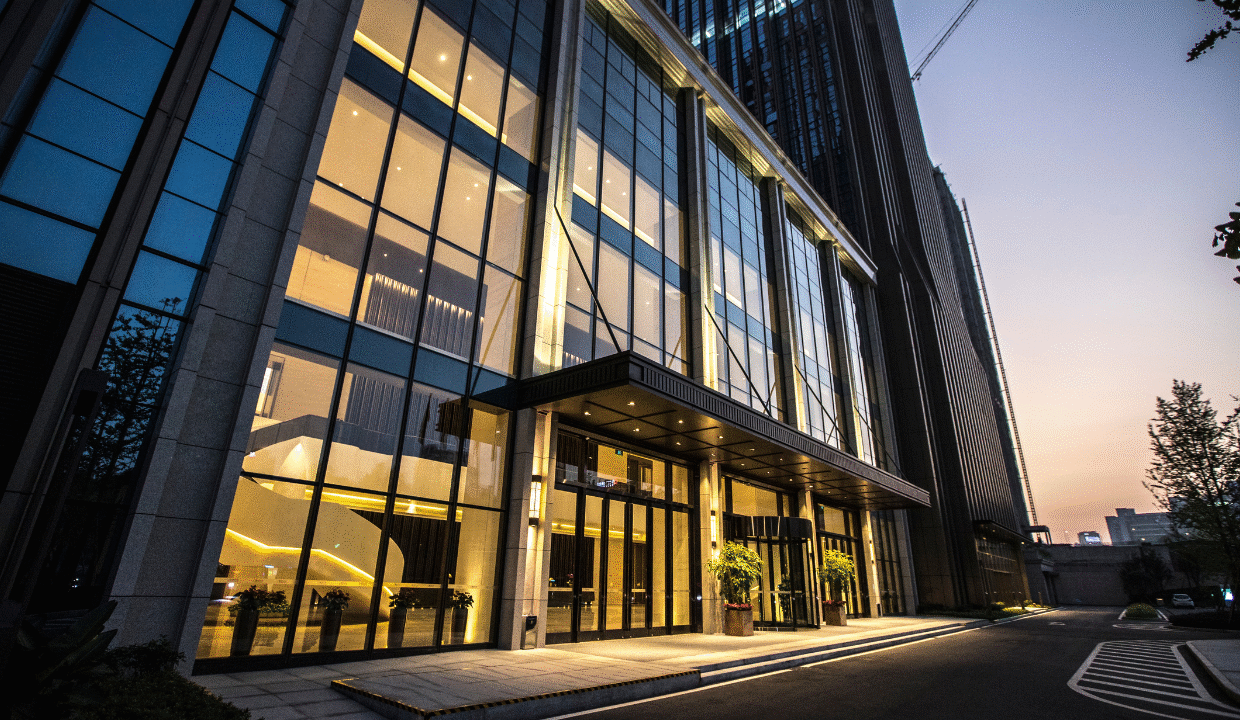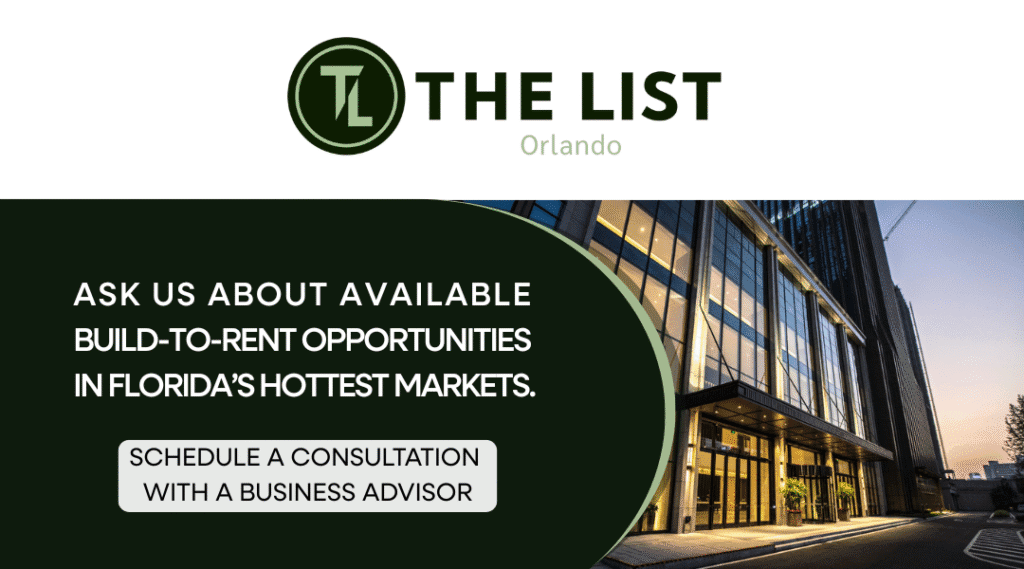
Florida has long been one of the most dynamic real estate markets in the United States. From luxury beachfront condos to thriving commercial hubs and master-planned suburban developments, the Sunshine State consistently attracts investors from across the globe.
Now, a new trend is reshaping the market: Build-to-Rent (BTR) communities. Entire neighborhoods designed specifically for long-term rentals are emerging as one of the fastest-growing asset classes in Florida. Combining the stability of residential demand with the scalability of commercial real estate, BTR is redefining housing for tenants and investment strategies for developers and institutional buyers.
Why Build-to-Rent Is Booming
The timing of Florida’s BTR boom is no coincidence. The state continues to experience massive population growth, fueled by domestic migration, international arrivals, and a strong labor market. With housing affordability under pressure from rising prices and higher interest rates, homeownership is becoming increasingly out of reach for many households.
At the same time, cultural attitudes toward renting have shifted. Renting is no longer seen only as a temporary stage before ownership. For many professionals, families, and retirees, it’s now a long-term lifestyle choice. BTR communities meet this demand by offering high-quality single-family homes in managed neighborhoods with amenities like pools, fitness centers, coworking spaces, and clubhouses.
Supply, Demand, and Demographics
On the demand side, Florida welcomes hundreds of thousands of new residents annually, many relocating from high-cost states such as New York, California, and Illinois. These new arrivals are drawn by the state’s warm climate, business-friendly policies, and lack of income tax.
However, the supply of for-sale homes has not kept up. Even when new construction adds inventory, affordability remains a challenge. BTR provides a solution by offering suburban living—yards, garages, privacy—without the financial burden of ownership.
Florida’s geography also plays a role. Cities like Orlando, Tampa, Jacksonville, and Miami are expanding outward, with suburban and exurban areas ripe for large-scale residential development. Meanwhile, emerging markets such as Lakeland, Ocala, and Cape Coral are seeing rapid population growth, creating fertile ground for pioneering BTR projects.
A Hybrid Model Bridging Residential and Commercial
What sets BTR apart is its hybrid structure. Traditionally, residential real estate was dominated by individual homeowners and small landlords, while commercial real estate attracted institutional capital thanks to scale and predictable income.
BTR blends the two worlds:
-
Scalable portfolios – Entire neighborhoods developed under single ownership can be underwritten, financed, and managed like commercial assets.
-
Risk diversification – Rental income is aggregated across hundreds of homes, reducing exposure compared to single-unit investments.
-
Operational efficiency – Centralized property management lowers costs, while purpose-built design enhances tenant satisfaction.
-
Flexible exit strategies – Developers can sell stabilized BTR communities as income-producing assets or hold them for long-term cash flow.
For institutional investors, this model provides the same sophistication as multifamily towers or industrial parks, but with the added appeal of suburban living—a segment in high demand.
Who Is Driving Demand?
Florida’s BTR boom is supported by diverse demographic groups:
-
Millennials – Now the largest generation in the U.S. workforce, many are starting families and want suburban homes but remain priced out of ownership.
-
Gen Z – Entering adulthood, they embrace renting as a flexible lifestyle, valuing mobility and amenities.
-
Retirees – Downsizing and avoiding the responsibilities of ownership, while still seeking comfort and community.
-
International buyers – From Latin America, Canada, and Europe, many prefer renting due to temporary stays or investment flexibility.
This broad demand base gives BTR resilience across market cycles.
The Investor Perspective
Institutional and international investors are increasingly drawn to Florida’s BTR market because it aligns with long-term macroeconomic trends:
-
Consistent population growth ensures a stable tenant base.
-
Predictable rental income offers reliable cash flow.
-
Inflation hedging makes BTR an attractive portfolio addition.
-
Professional management reduces the hands-on oversight typical of smaller rental portfolios.
Brazilian, Canadian, and European investors, in particular, see BTR as a way to enter the U.S. market with efficiency and scale, rather than managing individual properties.
Florida’s favorable regulatory environment—no state income tax, strong landlord-tenant laws, and pro-development policies—further strengthens its appeal.
Challenges and Risks
Like any asset class, BTR comes with challenges:
-
Land and construction costs can affect profitability.
-
Supply chain disruptions may delay delivery.
-
Oversupply risks in some markets could pressure rental rates.
-
Rising interest rates impact financing structures.
Yet compared to other real estate segments, BTR shows strong resilience. Even in downturns, demand for affordable rental housing remains high. The key for investors is choosing the right markets, aligning with experienced developers, and maintaining disciplined management.
Florida’s Build-to-Rent Hotspots
Several regions are leading Florida’s BTR wave:
-
Orlando & Central Florida – Strong job growth, tourism, and a young workforce.
-
Tampa Bay – Expanding financial services and healthcare sectors drive steady demand.
-
Jacksonville – Logistics and military presence ensure stability and affordable land.
-
South Florida – Miami and Fort Lauderdale remain attractive for luxury-oriented BTR projects despite higher land costs.
-
Emerging Cities – Lakeland, Ocala, Palm Coast, and Cape Coral are affordable, fast-growing, and ideal for early investors.
The Future of BTR in Florida
Looking ahead, Florida’s BTR market appears robust. Developers are shifting from traditional for-sale subdivisions to rental-focused projects, while investors increasingly view BTR as a core asset class in commercial real estate portfolios.
Technology will enhance operations through smart homes, digital management platforms, and energy-efficient design. Sustainability will also shape future communities, appealing to environmentally conscious tenants and investors alike.
Most importantly, the cultural shift toward renting ensures that BTR is not a temporary trend but a structural evolution in housing.
Conclusion
Build-to-Rent communities represent one of the most significant transformations in Florida’s real estate market. By merging the reliability of residential demand with the scalability of commercial investment, BTR has become a hybrid model attracting global capital.
For residents, these communities offer affordable, flexible, and amenity-rich living. For investors, they provide predictable returns, diversification, and resilience.
Florida has always been a land of opportunity, and BTR communities are shaping its next chapter—signaling not just a trend, but a new era in housing and investment.


